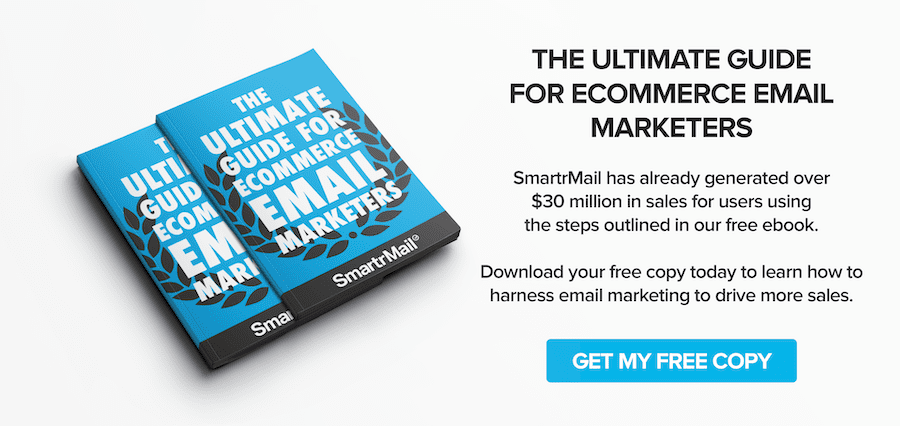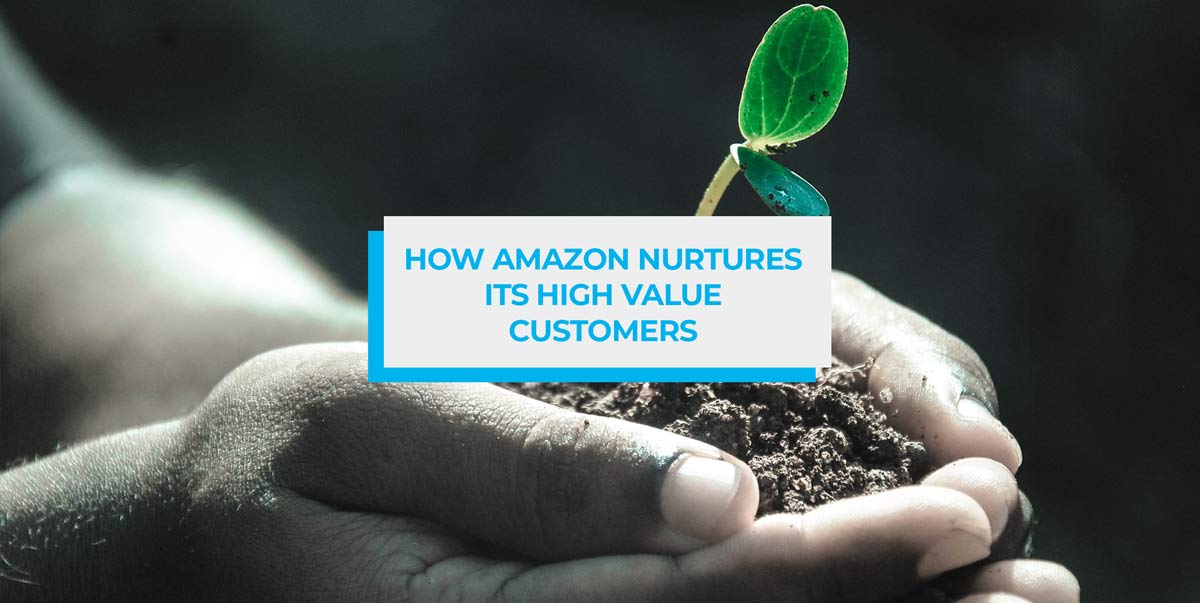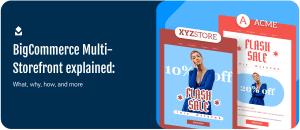How Amazon Nurtures Its High Value Customers. All customers are not made equal.
Some of them randomly stumbled upon your store, bought something, and never came back.
Others are customers who shop at your store every now and then, and spend a fair amount of money on your products.
And then there are your high-value customers – people who shop at your store on a regular basis and spend a lot of money on whatever it is that you are selling.
High-value customers are the ones that you should be spending most of your time on, because they probably make up 80% (or more!) of your revenue.
Spoil them with attention and gifts and opportunities. It’s one of the best investments you can make when it comes to ecommerce.
And who better to learn from than the ultimate ecommerce store itself: Amazon?
The Pareto Principle
Okay, so you probably know this already, but repetitio mater studiorum est; repetition is the mother of learning. And yes, I looked up the Latin version on Google, just so I’d sound fancy. Anyway…
Vilfredo Pareto was an Italian polymath most known for his 80/20 principle that has been named after him. While gardening, he observed that 20% of peapods in his garden contained 80% of the peas, and then he realized that other things follow this distribution too. He introduced what we now know as the Pareto principle in his first paper Cours d’économie politique, in which he showed that 20% of the people in Italy own 80% of all the land.
Businesses tend to follow this distribution as well. For example, 20% of Amazon US customers shop there once a week, and 80% of Amazon US customers shop there once a month. It’s everywhere you look.
My guess would be that 20% of your customers are responsible for 80% of the revenue. And even if I’m wrong about the exact numbers, the main idea still applies; a relatively small percentage of your customers make up the vast majority of your revenue.
One of the best things you could do for your business is to identify those customers and shower them with attention, deals, gifts, etc. They are keeping the lights on, so treat them for what they are – VIPs. And, of course, do your best to get even more customers like that!
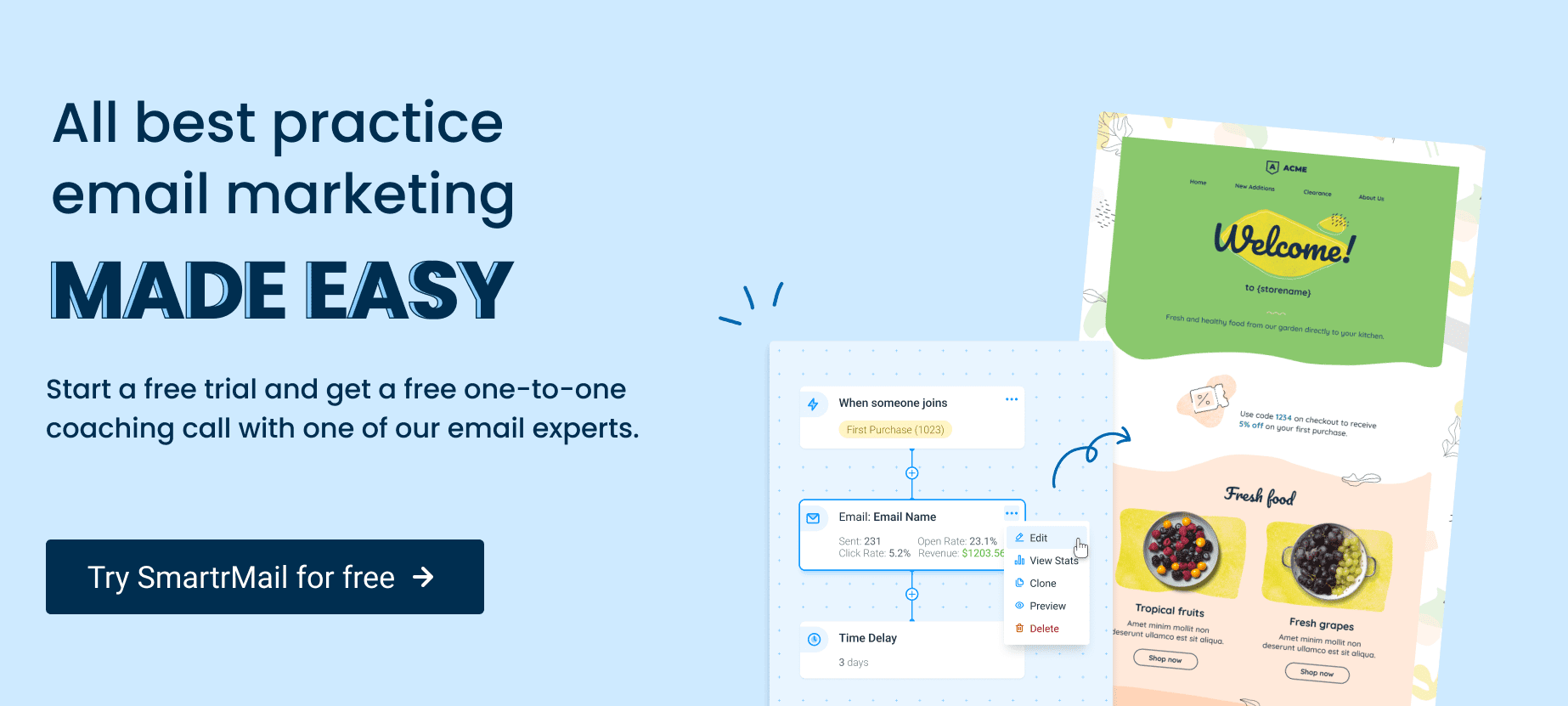
3 Ways Amazon Nurtures Its High Value Customers
In order to understand marketing, you have to understand human relationships; all marketing ultimately boils down to the relationship between the seller and the buyer.
Here are three keys to any successful relationship – be it personal or professional.
#1 Personalized recommendations
Amazon puts a lot of time, energy, and money into its recommendation engine – and then it plasters its recommendations all over the place.
When I open Amazon’s homepage, here’s what I see:
- Related to items you’ve viewed
- More items to consider
- Get yourself a little something
- New for you
- Inspired by your browsing history
- Recommendations for you in Books
- Recommendations for you in Kindle Store
So just in the homepage, I’m exposed to 42 products (most of them books), that I might like. And in case I somehow missed all the recommendations above, at the bottom of the page Amazon also has Your recently viewed items and featured recommendations section, and in the very bottom of the page it has You viewed.
What’s important here is that Amazon isn’t throwing random products at me or suggesting things based on my general profile (I’m a 27 year old woman who loves psychological thrillers and would not be impressed if Amazon would start recommending me romance novels) – they are recommending books that I’m very likely to enjoy because the recommendations are based on my own behaviour (browsing, purchases, etc.).
Remember, your customers are individuals, and their tastes can vary wildly. The more you personalize your store to meet their specific needs, the easier it will be for you to sell them your products.
Nurture your customers with SmartrMail today
? Install SmartrMail and get started with our 15 day free trial?
What you can do:
You don’t need a massive team of web developers to create all kinds of Amazon-like algorithms for your ecommerce store – you can easily start including personalized on-site recommendations by yourself.
LimeSpot allows you to integrate targeted product recommendations for your Shopify store, allowing you to get more sales by showing customers products they’re interested in.
Examples of some things the app allows you to do are cross-selling complementary products on product pages, and including last minute product recommendations on the checkout page.
For a more in depth guide on personalizing your store’s recommendations, read here: How to Achieve Amazon-like Sales Growth with Product Recommendations.
#2 Personalized emails
Amazon is also sending me emails everyday. And guess what? I still haven’t banished them from my inbox. Actually, I open Amazon’s emails regularly, and buy the offered products fairly often.
Why is their email marketing so effective at making me open their emails, click through, and click the Buy button? The answer is simple: their emails provide value with recommendations and offers.
For example, every day, I get a Kindle Daily Deal email, and I often end up buying one of the books offered because hey, 99p.
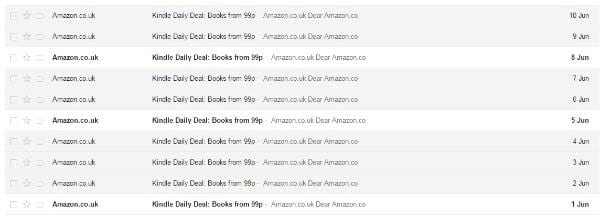
When you look at it from the perspective of the seller, this doesn’t sound like a gold mine, but keep in mind that 99p here and 99p there does add up (say, in the month of April I bought 30 books for 99p, mostly through the Kindle Daily Deal and Kindle Monthly Deals).
Then I also get recommendation emails that say “Based on your recent visit, we thought you might be interested in these items”. For example, I’m interested in permaculture, and my browsing history indicates that. Amazon sent me a very useful email with a list of 13 related books (I cropped the screenshot because the entire thing was enormous).

Note how Amazon is bombarding me with sales pitch after sales pitch, but it doesn’t feel like they are, because all their “suggestions” are so relevant to me and genuinely add value.
What you can do:
Up your email marketing game! Start sending your customers personalized product recommendations straight to their inboxes. To learn more about why you email personalization is so important, read here: The Greatest Benefits of Email Personalization for E-Commerce.
SmartrMail allows you to quickly create and easily send effective ecommerce emails. You can send automated personalized product recommendation emails to your customers that will result in higher conversion rates. Read about when the best times are to send automated product recommendation emails: Knowing When to Use Automated Product Recommendation Emails.
Sign-up to our newsletter and receive a 30% discount on your first 6 months with SmartrMail
#3 Amazon Prime
Amazon also has a membership program, Amazon Prime, where they offer a bunch of benefits for £7.99/month or £79 a year (one day delivery, music and video streaming, games, photo storage, etc.).

The deal itself is great, especially for those who, unlike me, live in countries where one day delivery applies (in my case, it’s probably for the better that we don’t have that in Lithuania, because I’m already spending more money on books than I should… Don’t judge, we all have our vices, okay?!).
Amazon goes the extra mile for the Prime Members, though. For example, when I opened it to take the screenshot you see above, I saw that one of my favorite artists, Katie Melua, will be performing in London, which from what I understand will be exclusive for Prime members. I’m tempted to go!

Okay, so apparently, Prime Live Events is a thing. Amazon organizes live concerts in iconic venues that are exclusive for Prime members. I just subscribe to the newsletters to stay updated!
I’m pretty sure that organizing live events is a pain in the ass… But it’s worth it in the long run. Do you see how much effort Amazon is putting into gaining trust and ensuring the loyalty of their customers?
What you can do:
Reward your top customers. You don’t need to throw a concert for them, but acknowledging that they matter is a good way to increase customer loyalty and LTV.
Swell Rewards can help you identify and reward your ecommerce store’s top customers. While their rewards program isn’t as sophisticated as Amazon Prime, your customers will still appreciate the gesture. You can let your most loyal customers in on exclusive sales and offers – a special discount offer code or a free gift, for example.
Go the extra mile!
Throughout the course of our formal education, we learn to only do what’s required to get the desired grade, and we never develop a habit of going above and beyond (going above and beyond what’s required to get an A+ is simply inefficient use of resources if the aim is to get an A+).
However, this attitude simply doesn’t work for entrepreneurs. You have to learn to go above and beyond in order to win and keep customers. And once you do, make going that extra mile a habit. Always ask yourself: what more can I do for my customers?
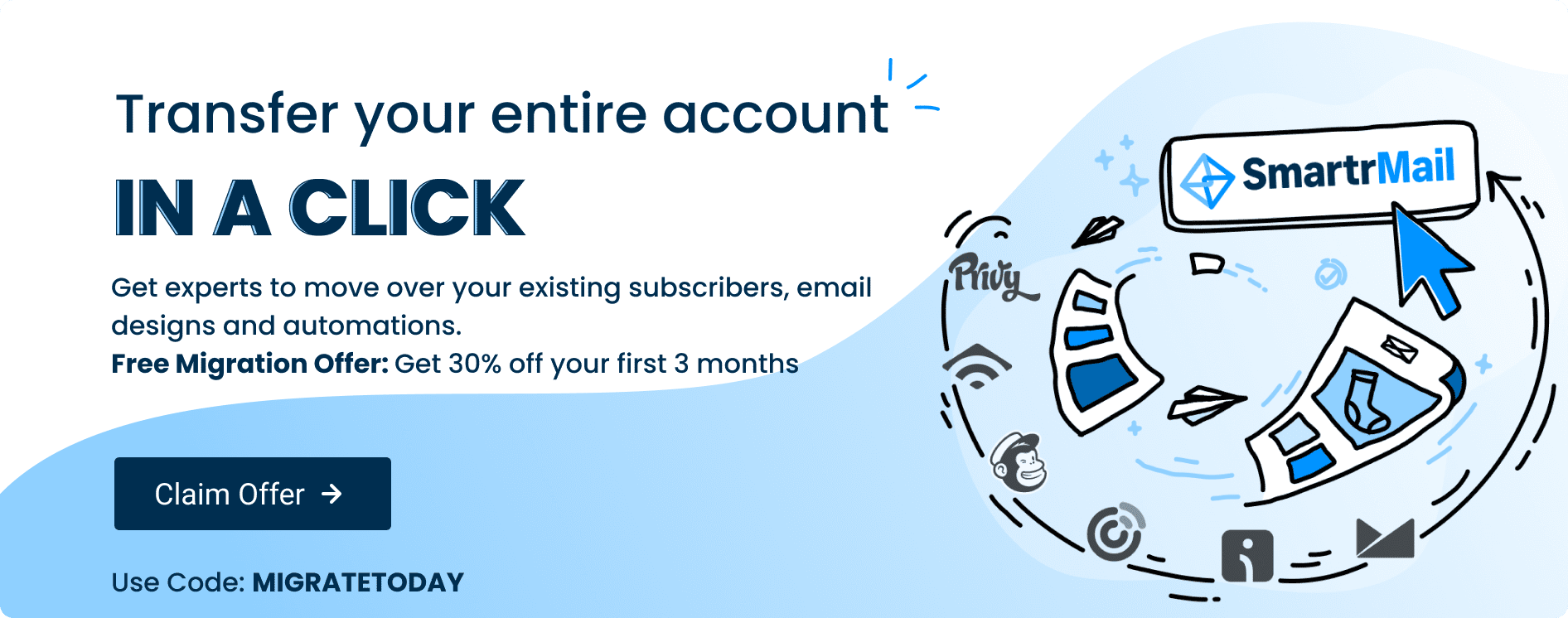
You should always learn from the best
You might be wondering why I turned this article into a love letter to Amazon.
The answer is simple: you should always learn from the best. Sure, you can also learn from those who are also just starting out in ecommerce, you can learn from those who already have established ecommerce stores, you can learn from people who are experts in online marketing, etc. However, if you run an ecommerce business, then your main study focus would be learning from the greatest ecommerce companies in the world. And who’s greater than Amazon?
With over 310 million users and $136 billion net sales in 2016, it’s the biggest ecommerce store in the world. Did you know that 50% of all US online shoppers are on the Amazon app? And, unlike some huge companies, Amazon is actually making money – its net income for 2016 was $2.4 billion. Not too shabby!
You have to remember that Jeff Bezos wasn’t always the Bezos we know today, just like Amazon wasn’t always the Amazon we know now. Once upon a time, there was a young entrepreneur, and a tiny bookstore, in a world where the idea of buying things over the Internet was novel. And it was Bezos’ shrewdness that got him from where he was then to where he is now.
Want to learn more about Bezos and Amazon? I highly recommend all ecommerce entrepreneurs to read The Everything Store: Jeff Bezos and the Age of Amazon by Brad Stone!
